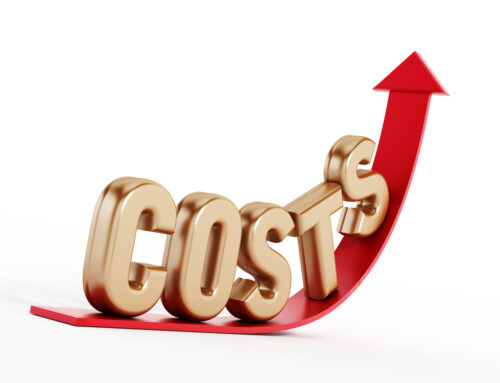Since President Biden announced on August 24 that he was canceling student loan debt for millions of borrowers, there has been a flurry of responses from a wide range of individuals. One of the main criticisms of Biden’s plan is that canceling student debt does nothing to address rising college costs, which have made earning a degree unattainable for many.
Just in case you’re not aware of how expensive it is to attend college these days, consider the following:
- Since 1980, the costs of public and private four-year colleges have nearly tripled, after accounting for inflation.
- 45 million Americans — about 1 in 7 — have student loan debt totaling over $1.6 trillion.
- Since 2006, student loan debt has more than tripled.
- More than 60% of students who graduated in 2019 from public and private non-profit colleges took out loans. These students had an average debt of $28,950.
So, what does it actually cost to go to college right now? Every year, College Board reports the average cost of attendance (COA) at different types of colleges. COA includes tuition and fees, room and board, books and supplies, transportation, and other expenses. Below are the averages for the 2021-2022 school year:
- in-state public four-year colleges: $27,330
- out-of-state public four-year colleges: $44,150
- private non-profit four-year colleges: $55,800
CBS News recently published a list of the 50 most expensive colleges in the U.S., all of which cost over $73,000 for the 2020-2021 school year. These costs included only tuition and fees and room and board, which means that the full COA at each school was even higher. Additionally, it’s fairly safe to assume that these colleges’ costs have increased for the 2022-2023 school year.
When I decided to write this blog post, I wanted to answer the question, “Why is college so expensive?” After doing considerable research, I came up with several reasons.
Earnest, a provider of private student loans (in other words, not those canceled by President Biden), identified four factors that have contributed to the rising cost of college:
- Marketing and recruitment: Between 2000-2015, the number of Americans enrolled in college jumped 32%. To accommodate the growing demand for higher education, more for-profit colleges have been established, which means non-profit schools have had to do more to market themselves to prospective students. Colleges currently spend $10 billion/year on recruitment, and some estimate that this expenditure will eventually reach $100 billion/year.
- Facilities and amenities: Another way that colleges are trying to attract students is by offering top-notch facilities and amenities. If you’ve been on any campus tours lately, you’ve probably seen examples of this: state-of-the-art fitness centers, dining halls that serve sushi and steak, and residence halls with pools and game rooms. All of this comes at a cost, much of which is passed on to students. Yet, as the Earnest article pointed out, “while these improvements may indeed help lure students to attend, they don’t necessarily contribute to their academic success.”
- More administrative staff: According to the Earnest article, the Department of Education found that from 1993-2009, there was a 60% increase in the number of administrative positions at colleges. This was 10 times the growth of tenured professor positions. As an example of this trend, in 2021, the Yale Daily News reported that since 2003, the number of professional and managerial staff at the university had grown at three times the rate of the undergraduate student body.
- Higher salaries for high-ranking administrators: Earlier this month, The Chronicle of Higher Education published lists of the highest-paid public and private college presidents. In 2019, there were over 60 private college presidents who made over $1 million (with the highest-paid one earning over $5 million), and in 2021 there were 16 public college presidents who made more than $1 million. It’s not just college presidents who are making that kind of money; you’ve probably heard about the eye-popping salaries of some college football coaches.
In addition to the above factors, changes in state funding and rising inflation have also contributed to an increase in college costs. According to Forbes, “overall state funding for public higher education increased by 4.5% in Fiscal Year 2021,” and that was the ninth year in a row of funding increases. However, ten states decreased their funding for public colleges and 29 had funding amounts that were still lower than what they were prior to the 2008 recession.
Rising inflation is causing colleges to increase their tuition by higher percentages than they have in the last few years. In July, CNBC reported that in the 2021-2022 school year, the average increase in tuition and fees was 1.6% for in-state students at public four-year colleges and 2.1% at private four-year colleges. This year, some colleges raised their tuition and fees by up to 5%.
Finally, rising interest rates (intended to combat inflation) have made it more expensive to take out student loans. In the 2020-2021 school year, the interest rate on federal student loans was 2.75%. In 2021-2022, it went up to 3.73%, and in 2022-2023, it’s 4.99%.
All of this means that we can expect the cost of college to continue increasing for the foreseeable future. So the question remains, “What, if anything, is our government (or colleges themselves) going to do about that?”







[…] the larger problem of the rising cost of college. In response, I published a blog post entitled, “Why Is College So Expensive?” A couple weeks later, the podcast The Daily devoted an episode to this same topic, during which […]